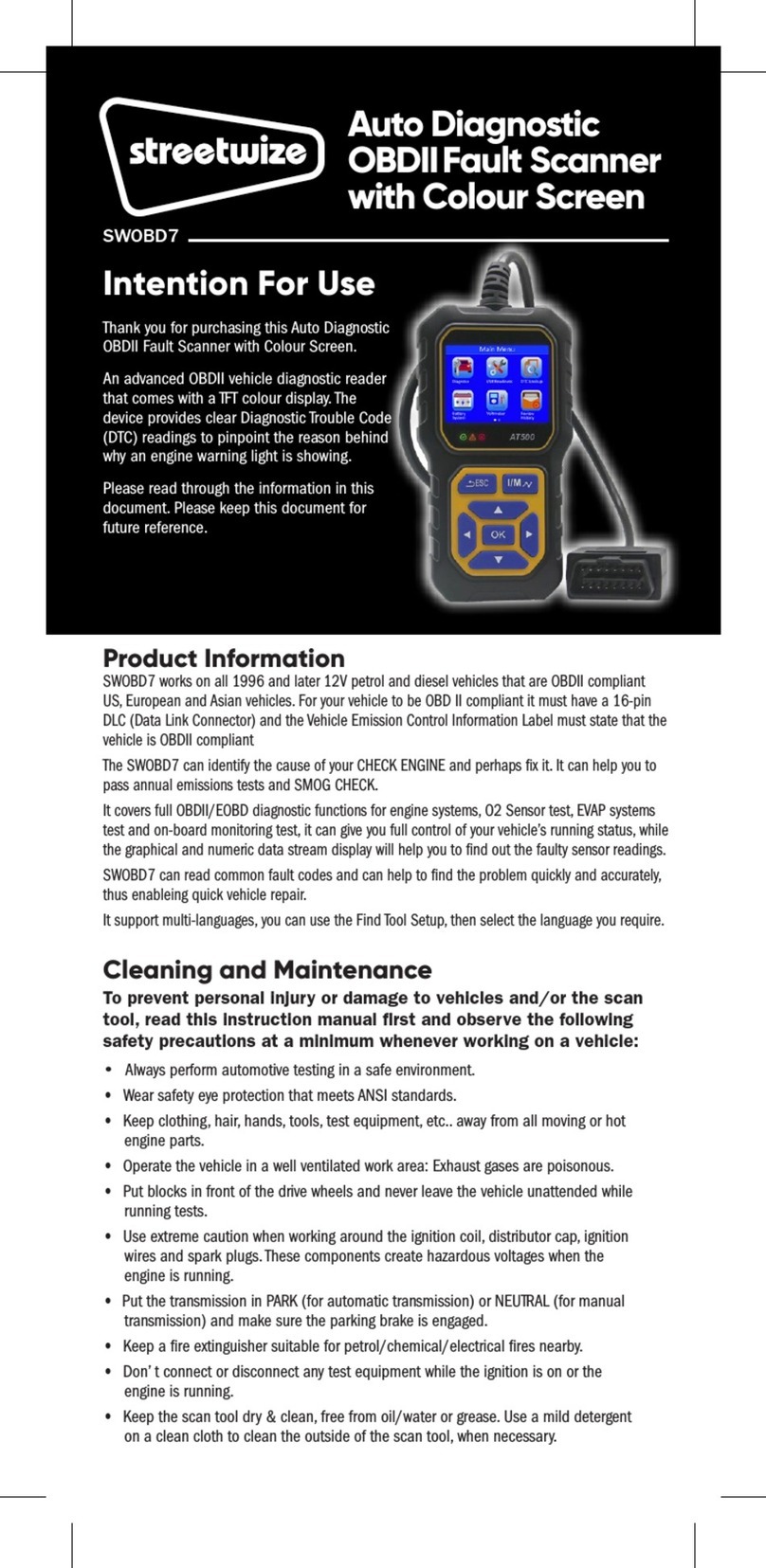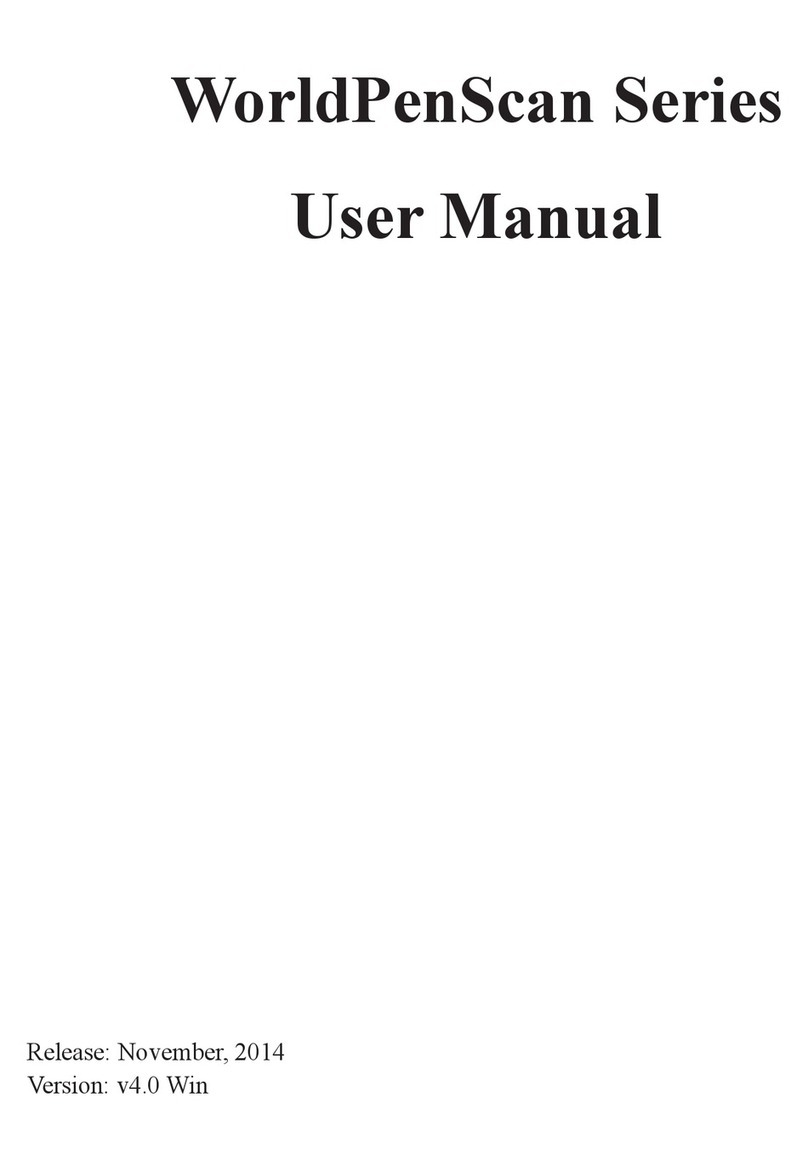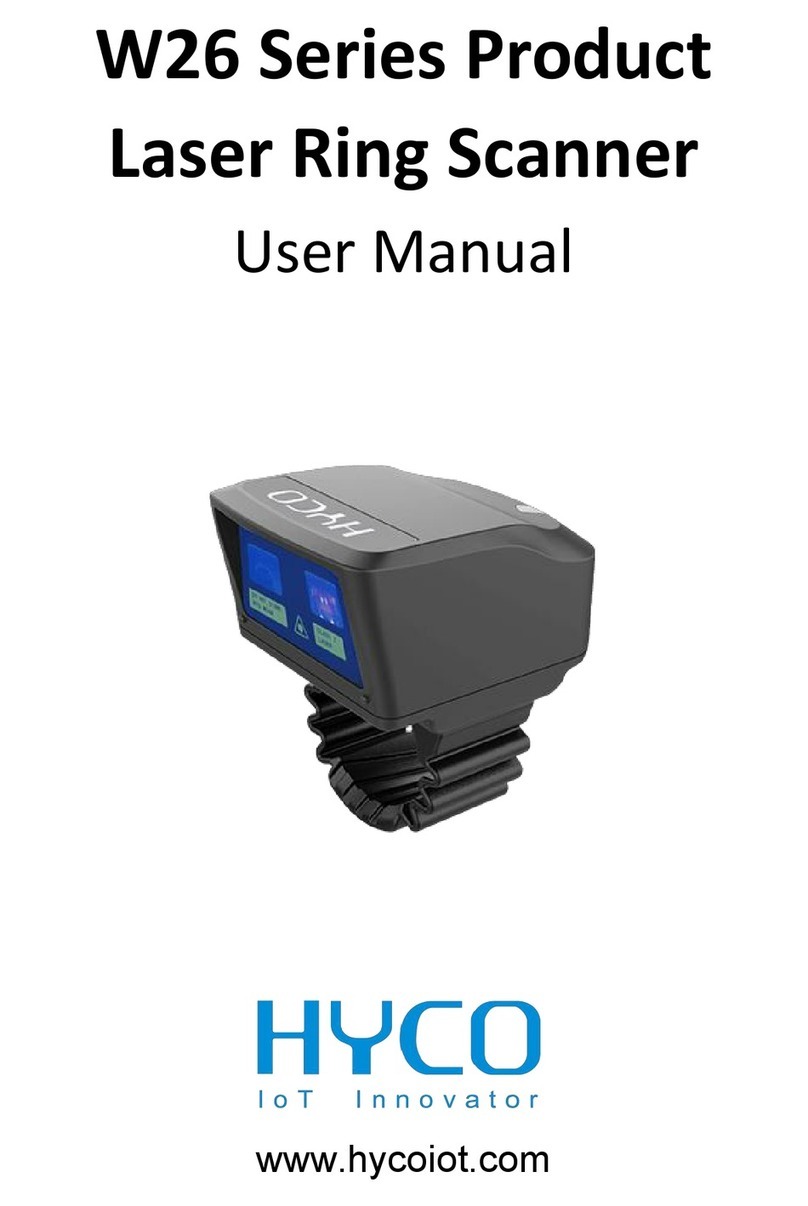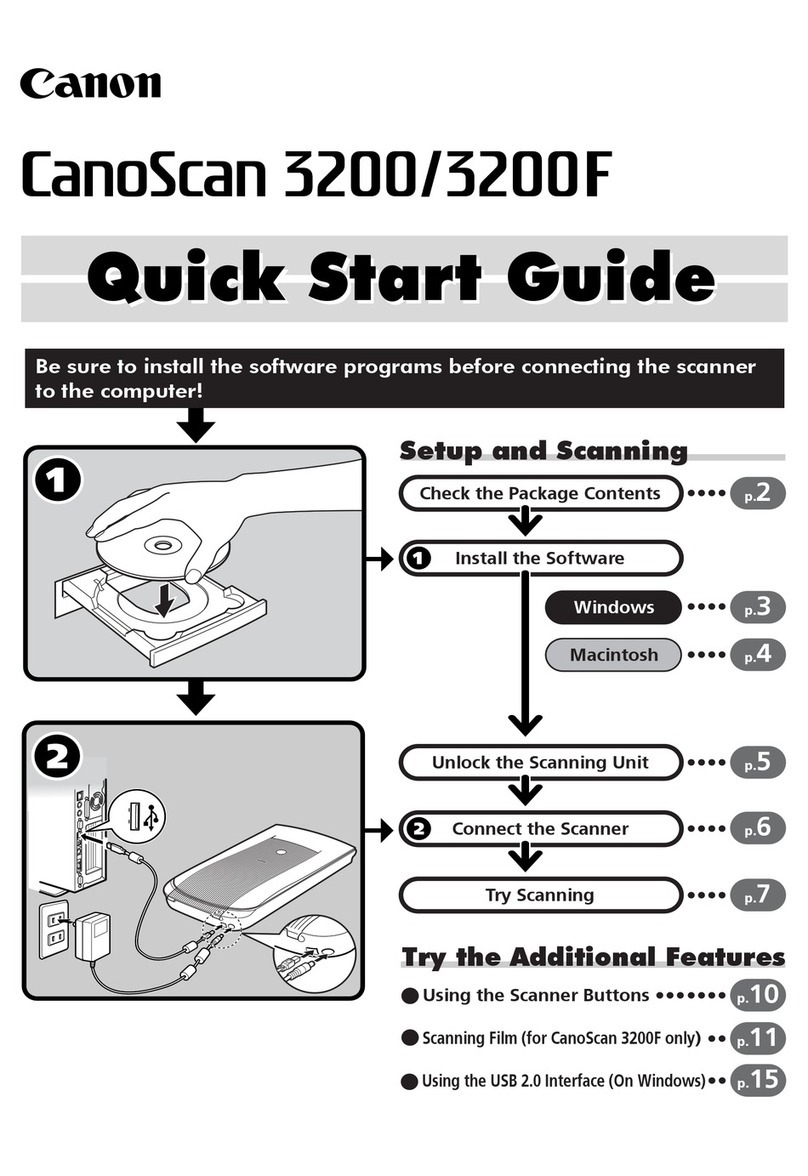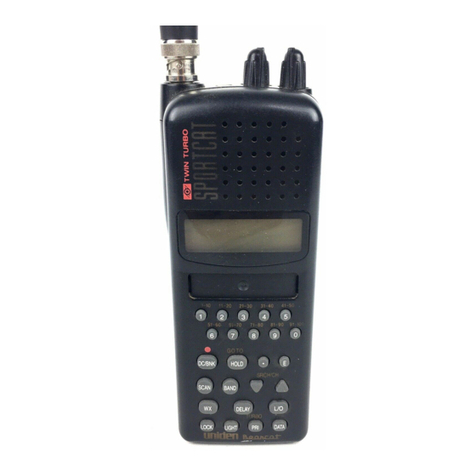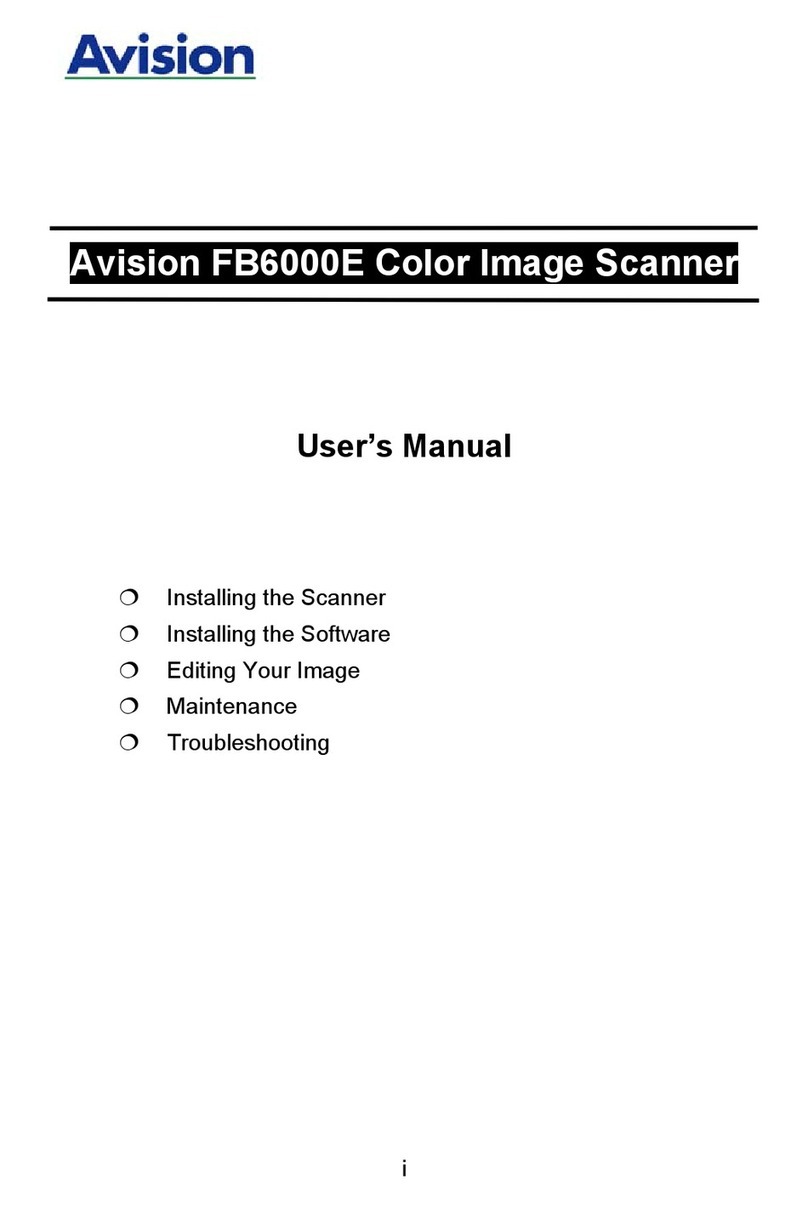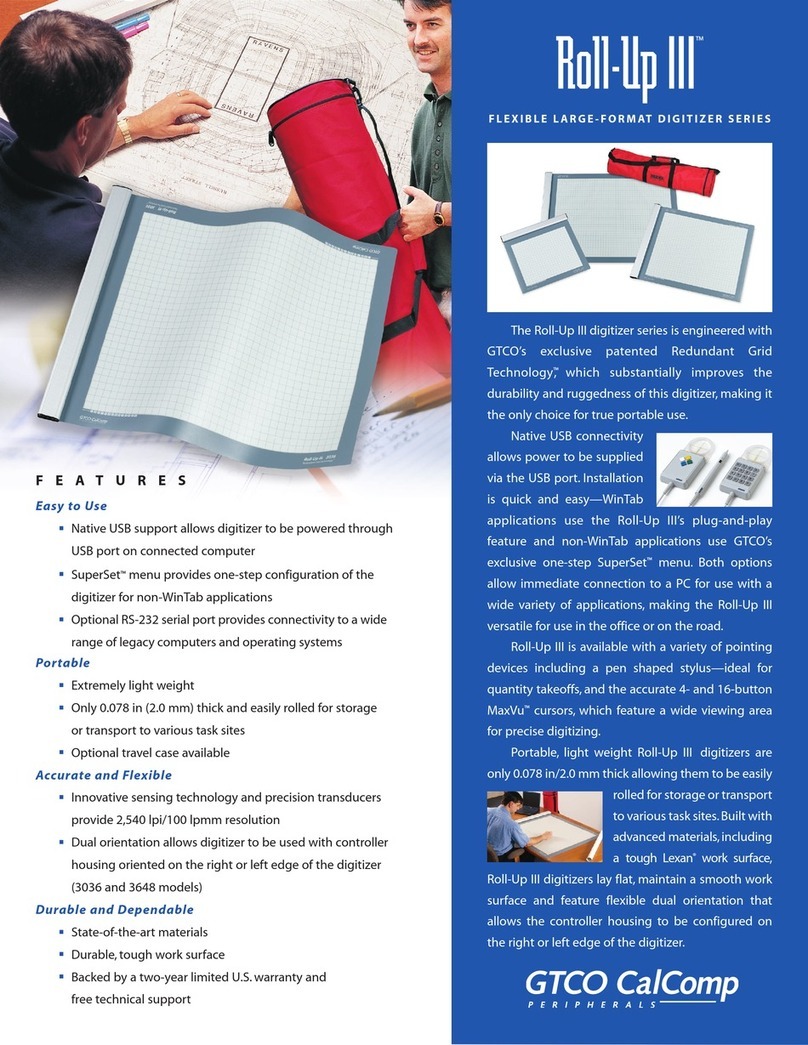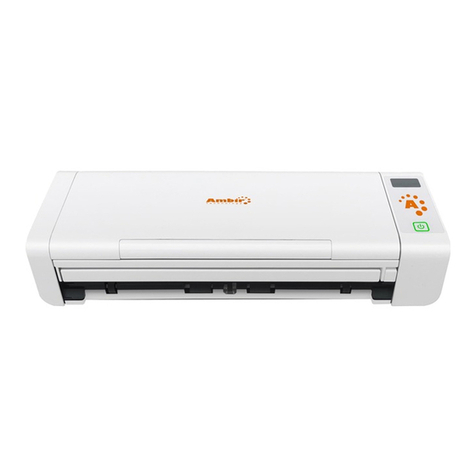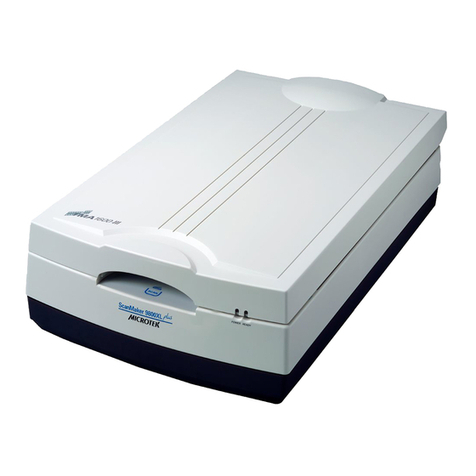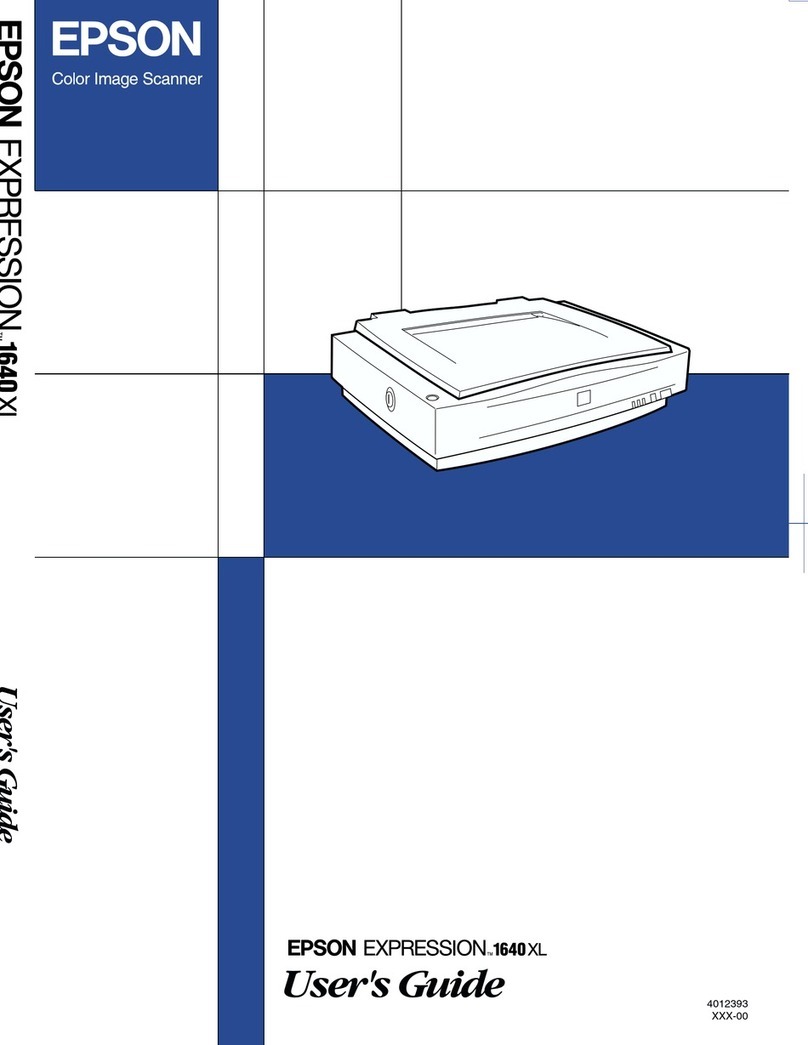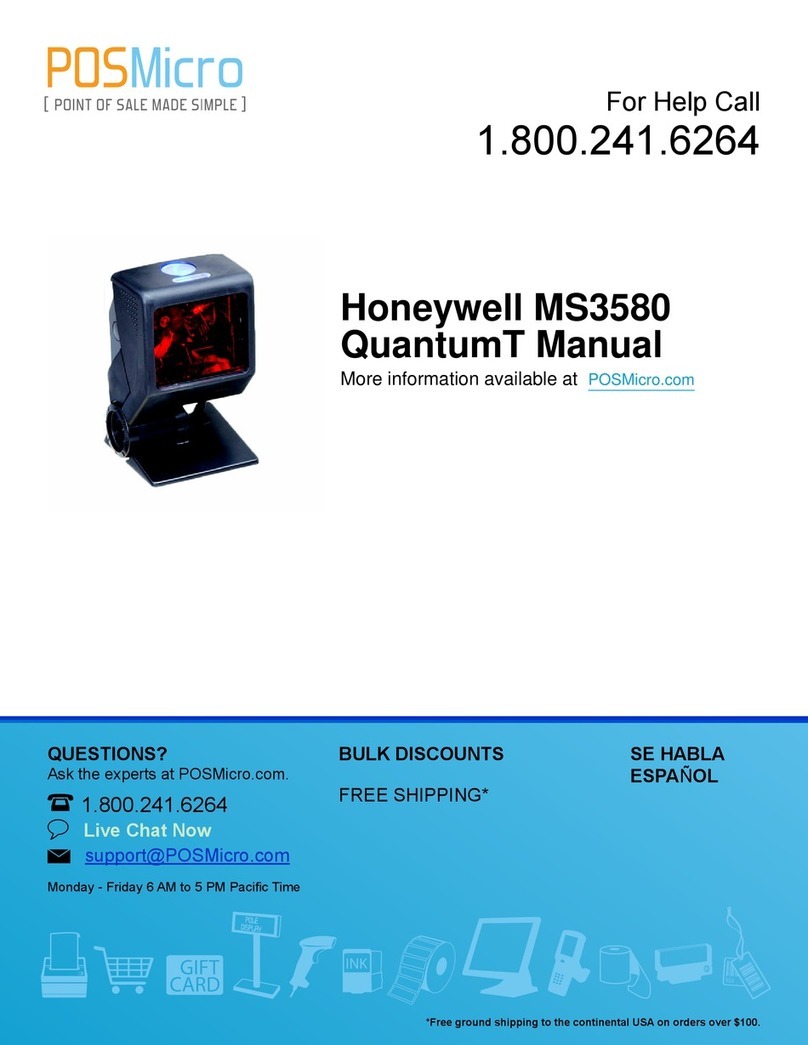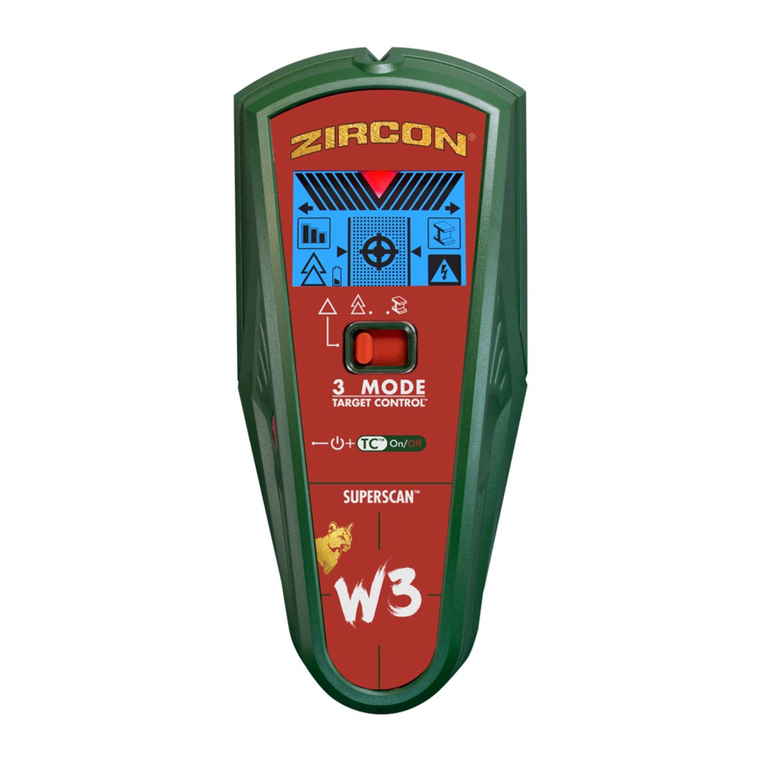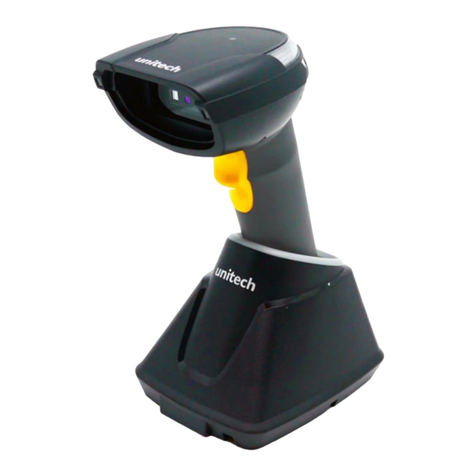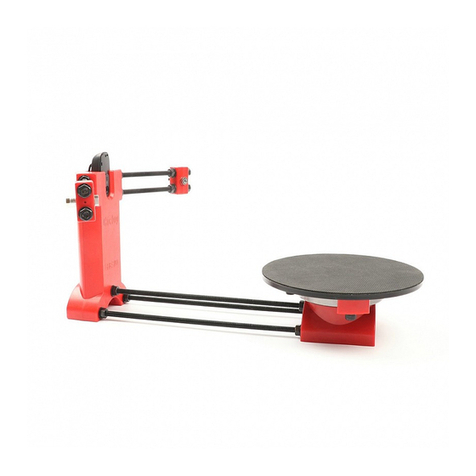Streetwize SWOBD User manual

CAN OBD II SCAN TOOL
Read & erase diagnostic trouble codes for OBD II compliant vehicles.
PLEASE NOTE: YOU WILL ONLY BE ABLE TO TURN AN ENGINE WARNING LIGHT OFF
WHEN THE PROBLEM CAUSING THE WARNING LIGHT HAS BEEN RESOLVED.
Read and understand these instructions before use and
retain for future reference.
User Manual

1. Safety Precautions and Warnings........................................................................1
2. General Information
2.1 On-Board-Diagnostics (OBD) II...............................................................................1
2.2 Diagnostic Trouble Codes (DTCs)...........................................................................2
2.3 Location of the Data Link Connector (DLC).............................................................2
2.4 OBD II Readiness Monitors.....................................................................................3
2.5 OBD II Monitor Readiness Status............................................................................3
2.6 OBD II Terminology.................................................................................................4
3. Product Information
3.1 Tool Description.....................................................................................................5
3.2 Product Specications............................................................................................6
3.3 Product Features....................................................................................................6
3.4 Vehicle Coverage....................................................................................................6
4. Operating Instructions
4.1 Reading Codes.......................................................................................................7
4.2 Erasing Codes........................................................................................................9
4.3 Retrieving I/M Readiness Status............................................................................10
4.4 Viewing VIN Number..............................................................................................11
4.5 Rescanning Data...................................................................................................11
5. Diagnostic Trouble Code (DTC) Denitions........................................................12
6. Warranty and Service............................................................................Back Cover
Table of Contents

1. Safety Precautions and Warnings
To prevent personal injury or damage to vehicles and/or the scan tool, please read this
manual rst and follow the following safety instructions whenever working on a vehicle:
• Always perform automotive testing in a safe environment.
• Wear safety eye protection that meets ANSI standards.
• Keep clothing, hair, hands, tools, test equipment, etc, away from all moving or hot
engine parts.
• Operate the vehicle in a well-ventilated work area; Exhaust gases are poisonous.
• Put blocks on drive wheels and never leave vehicle unattended while running tests.
• Use extreme caution when working around the ignition coil, distributor cap, ignition
wires and spark plugs. These components create hazardous voltages when the engine is
running.
• Put transmission in PARK (for automatic transmission) or NEUTRAL (for manual
transmission) and make sure the parking brake is engaged.
• Keep a re extinguisher suitable for gasoline/chemical/ electrical res nearby.
• Don’t connect or disconnect any test equipment with ignition on or engine running.
• Keep the scan tool dry, clean and free from oil, water and grease. Use a mild detergent
on a clean cloth to clean the outside of the Scan Tool, when necessary.
2. General Information
2.1 On-Board-Diagnostics (OBD) II
The rst generation of On-Board Diagnostic (called OBD I), was developed by the
California Air Resources Board (ARB) and implemented in 1988 to monitor some of the
emission control components on vehicles. As technology evolved and the desire to
improve the OBD I system increased, a new generation of On-Board Diagnostics system
was developed. This second generation of On-Board Diagnostic regulations is called
"OBD II".
The OBD II system is designed to monitor emission control systems and key engine
components by performing either continuous or periodic tests of specic components
and vehicle conditions. When a problem is detected, the OBD II system turns on a
warning lamp (MIL) on the vehicle instrument panel to alert the driver typically by the
phrase of “Check Engine” or “Service Engine Soon”. The system will also store
important information about the detected malfunction so that a technician can accurately
nd and x the problem. Here below follow three pieces of such valuable information:
• Whether the Malfunction Indicator Light (MIL) is commanded 'on' or 'off';
• Which, if any, Diagnostic Trouble Codes (DTCs) are stored;
• Readiness Monitor Status.
- 1 -

2.2 Diagnostic Trouble Codes (DTCs)
OBD II Diagnostic Trouble Codes are codes that are stored by the on-board computer
diagnostic system in response to a problem found in the vehicle. These codes identify a
particular problem area and are intended to provide you with a guide as to where a fault
might be occurring within a vehicle. OBD II Diagnostic Trouble Codes consist of a
ve-digit alphanumeric code. The rst character, a letter, identies the control system
which sets the code. The other four characters, all numbers, provide additional
information on where the DTC originated and the operating conditions that caused it to
set. Here below is an example to illustrate the structure of the digits:
DTC Example
P 0 2 0 2
Systems
B=Body
C=Chassis
P=Powertrain
U=Network
Code Type
0=Generic
1=Manufacturer
Specic
Sub-systems
1=Fuel and Air metering
2=Fuel and Air metering
3=Ignition System or
Engine Misre
4=Auxiliary Emission
Controls
5=Vehicle Speed Control
and Idle Controls
6=Computer Output Circuits
7=Transmission Controls
8=Transmission Controls
Identifying Specic
Malfunctioning Section
of the Systems
2.3 Location of the Data Link Connector (DLC)
The DLC (Data Link Connector or Diagnostic Link Connector) is the standardized
16-cavity connector where diagnostic scan tools interface with the vehicle's on-board
computer. The DLC is usually located 12 inches from the center of the instrument panel
(dash), under or around the driver’s side for most vehicles. For some Asian and
European vehicles, the DLC is located behind the ashtray and the ashtray must be
removed to access the connector. Refer to the vehicle’s service manual for the location
if the DLC cannot be found.
- 2 -

2.4 OBD II Readiness Monitors
An important part of a vehicle’s OBDII system is the Readiness monitors, which are
indicators used to nd out if all of the emissions components have been evaluated by the
OBD II system. They are running periodic tests on specic systems and components to
ensure that they are performing within allowable limits.
Currently, there are eleven OBD II Readiness Monitors (or I/M Monitors) dened by the
U.S. Environmental Protection Agency (EPA). Not all monitors are supported by all
vehicles and the exact number of monitors in any vehicle depends on the motor vehicle
manufacturer’s emissions control strategy.
Continuous Monitors -- Some of the vehicle components or systems are continuously
tested by the vehicle’s OBDII system, while others are tested only under specic vehicle
operating conditions. The continuously monitored components listed below are always
ready:
1. Misre
2. Fuel System
3. Comprehensive Components (CCM)
Once the vehicle is running, the OBDII system is continuously checking the above
components, monitoring key engine sensors, watching for engine misre, and
monitoring fuel demands.
Non--Continuous Monitors -- Unlike the continuous monitors, many emissions and
engine system components require the vehicle to be operated under specic conditions
before the monitor is ready. These monitors are termed non-continuous monitors and
are listed below:
1. EGR System
2. O2 Sensors
3. Catalyst
4. Evaporative System
5. O2 Sensor Heater
6. Secondary air
7. Heated Catalyst
8. A/C system
2.5 OBD II Monitor Readiness Status
OBDII systems must indicate whether or not the vehicle’s PCM’s monitor system has
completed testing on each component. Components that have been tested will be
- 3 -

reported as “Ready”, or “Complete”, meaning they have been tested by the OBDII
system. The purpose of recording readiness status is to allow inspectors to determine if
the vehicle’s OBDII system has tested all the components and/or systems.
The powertrain control module (PCM) sets a monitor to “Ready” or “Complete” after an
appropriate drive cycle has been performed. The drive cycle that enables a monitor and
sets readiness codes to “ready” varies for each individual monitor. Once a monitor is set
as “Ready” or “Complete”, it will remain in this state. A number of factors, including
erasing of diagnostic trouble codes (DTCs) with a scan tool or a disconnected battery,
can result in Readiness Monitors being set to “not ready”. Since the three continuous
monitors are constantly evaluating, they will be reported as “Ready” all of the time. If
testing of a particular supported non-continuous monitor has not been completed, the
monitor status will be reported as “Not Complete” or “Not Ready.”
In order for the OBD monitor system to become ready, the vehicle should be driven under
a variety of normal operating conditions. These operating conditions may include a mix
of highway driving and stop and go, city type driving, and at least one overnight-off
period. For specic information on getting your vehicle’s OBD monitor system ready,
please consult your vehicle owner’s manual.
2.6 OBD II Terminology
Powertrain Control Module (PCM)--OBDII terminology for the on-board computer that
controls engine and drive train.
Malfunction Indicator Light (MIL)--Malfunction Indicator Light (Service Engine Soon,
Check Engine) is a term used for the light on the instrument panel. It is to alert the driver
and/or the repair technician that there is a problem with one or more of vehicle's systems
and may cause emissions to exceed federal standards. If the MIL illuminates with a
steady light, it indicates that a problem has been detected and the vehicle should be
serviced as soon as possible.
Under certain conditions, the dashboard light will blink or ash. This indicates a severe
problem and ashing is intended to discourage vehicle operation. The vehicle onboard
diagnostic system cannot turn the MIL off until the necessary repairs are completed or
the condition no longer exists.
DTC--Diagnostic Trouble Codes (DTC) that identies which section of the emission
control system has malfunctioned.
Enabling criteria--Also termed Enabling Conditions. They are the vehicle-specic events
or conditions that must occur within the engine before the various monitors will set, or
run. Some monitors require the vehicle to follow a prescribed “drive cycle” routine as
part of the enabling criteria. Drive cycles vary among vehicles and for each monitor in
any particular vehicle.
- 4 -

OBDII Drive Cycle-- A specific mode of vehicle operation that provides conditions
required to set all the readiness monitors applicable to the vehicle to the “Ready”
condition. The purpose of completing an OBD II drive cycle is to force the vehicle to run
its onboard diagnostics. Some form of a drive cycle needs to be performed after DTCs
have been erased from the PCM's memory or after the battery has been disconnected.
Running through a vehicle's complete drive cycle will “set” the readiness monitors so
that future faults can be detected. Drive cycles vary depending on the vehicle and the
monitor that needs to be reset. For vehicle specific drive cycle, consult the vehicle's
Owner's Manual.
3. Product Information
3.1 Tool Description
1. LCD DISPLAY--Indicates test results. It is a backlit 2-line display with 8 characters on
each line.
2. ENTER BUTTON--Confirms a selection (or action) from a menu list, or returns to the
main menu.
3. SCROLL BUTTON-- Scrolls through menu items or cancel an operation.
4. OBD II CONNECTOR--Connects the scan tool to the vehicle’s Data Link Connector
(DLC).
- 5 -
4
M17 1RY
SWODB
1
23

3.2 Product Specifications
•Display--Backlit LCD, 2 lines, 8 characters each
•Operating Temperature--0 to 50°C (32 to 122 F°)
•Storage Temperature-- -20 to 70°C (-4 to 158 F°)
•Power--DC12V provided via the vehicle’s battery
83)".0(mm12/thgieH,)"6.2(mm56/htdiW,)"7.4(mm021/htgneL:snoisnemiD•
•Weight: 225g (7.9oz)
3.3 Product Features
•Works with cars & light trucks that are OBD II/EOBD compliant (including CAN, VPW,
PWM, ISO and KWP 2000 protocols)
•Reads and clears generic and manufacturer specific Diagnostic Trouble Codes (DTCs)
and turns off check engine light
•Supports multiple trouble code requests: generic codes, pending codes and
manufacturer's specific codes
•Reviews the emission readiness status of OBD monitors
•Retrieves VIN (Vehicle Identification No.) on 2002 and newer vehicles that support
Mode 9
•Determines the malfunction indicator lamp (MIL) status
•Highly reliable and accurate
•Easy-to-read crystal-clear backlit 2-line LCD display
•Stand-alone unit with no need for an additional laptop or cellphone to operate
•Small in size, easily fits in your palm and easy to use
•Safely communicates with the vehicle on-board computer
•No batteries needed--powered via attached OBD II cable
3.4 Vehicle Coverage
The VC300 ORD II Scan Tool is specially designed to work with all OBD II compliant
vehicles, including those equipped with the next-generation protocol- Control Area
Network (CAN). It is required by EPA that All 1996 and newer vehicles (cars and light
trucks) sold in the United States must be OBD II compliant and this includes all
Domestic, Asian and European vehicles.
A small number of 1994 and 1995 model year gasoline vehicles are OBD II compliant.
To verify if a 1994 or 1995 vehicle is OBD II compliant, check the Vehicle Emissions
Control Information (VECI) Label which is located under the hood or by the radiator of
most vehicles. If the vehicle is OBD II compliant, the label will designate "OBD II Certified".
Additionally, government regulations mandate that all OBD II compliant vehicles must
have a "common" sixteen-pin Data Link Connector (DLC).
For your vehicle to be OBD II compliant it must have a 16-pin DLC (Data Link Connector)
under the dash and the Vehicle Emission Control Information Label must state that the
vehicle is OBD II compliant.
- 6 -

4. Operating Instructions
4.1 Reading Codes
CAUTION: Don't connect or disconnect any test equipment with ignition on or engine
running.
1. Turn the ignition off.
2. Locate the 16-pin Data Link Connector (DLC) and plug into the Scan Tool cable
connector to the DLC.
3. Wait for the LCD display to read “C.A.N.OBD2”.
C.A.N
OBD2
4. Turn the ignition on. But do not start the engine.
5. Press the ENTER button. A sequence of messages showing the OBD2 protocols will
be observed on the display until the vehicle protocol is detected.
SCAN...
VPW
SCAN...
PWM
SCAN...
CAN
SCAN...
KWP 2000
ISO9141
PROTOCOL
If a “LINK ERROR!” message shows up, turn the ignition off for about 10 seconds,
check if the Scan Tool's OBDII connector is securely connected to the vehicle's DLC,
and then turn the ignition back to on. Repeat the procedure from step 5. If the
“LINK ERROR” message does not go away, then there may be problems for the
Scan Tool to communicate with the vehicle.
6. Wait for the main menu to come up after a brief overview displaying the scanning
results with the total number of DTCs and the overall I/M Monitor Status
- 7 -

DTC: 02
IM: YES
7. Select “DTC” from the main menu by pressing the ENTER button.
MENU:
1.DTC
●If there are no Diagnostic Trouble Codes retrieved, the display will indicate
“NO CODES”.
NO
CODES
●If there are any Diagnostic Trouble Codes, then the total number of the Fault Codes
followed by that of the Pending Codes will be reported on the display.
FAULT:02
PEND:02
8. Read the Diagnostic Trouble Codes by pressing the SCROLL button.
●The rst code number will appear on the rst line of the LCD display, the numerical
sequence of the code and the total number of the codes stored will appear on the
second line. To view additional codes, press the SCROLL button to scroll, as necessary,
until all the codes have been shown up.
P0101
01/04
●If the code retrieved is a pending code, a “PD” will show on the LCD display in the
end.
P0005 PD
01/05
●To view previous codes, press the SCROLL button to scroll through to the end, and
then start from the rst of the list.
9. Look up part 5 for Diagnostic Trouble Code Denitions. Match the retrieved DTC(S)
- 8 -

with those listed and read the denitions.
4.2 Erasing Codes
CAUTION: Erasing the Diagnostic Trouble Codes allows the Scan Tool to delete not
only the codes from the vehicle’s on-board computer, but also “Freeze Frame” data
and manufacturer specic enhanced data. Further, the I/M Readiness Monitor
Status for all vehicle Monitors is reset to Not Ready or Not Complete status. Do not
erase the codes before the system has been checked completely by a technician.
1. If you decide to erase the DTCs, Select “2. ERASE” from the main menu by pressing
the ENTER button.
MENU:
2.ERASE
• If the Scan Tool is not connected or no communication is established with the vehicle
yet, then refer to “Reading Codes” from 1 to 6 at Paragraph 4.1.
2. A message of “ERASE? YES NO” comes up asking for your conrmation
MENU:
2.ERASE
3. If you do not want to proceed with erasing the codes, press the SCROLL button to
exit.
4. If you do wish to proceed to erase the codes, then press the ENTER button.
5. If the codes are cleared successfully, an “ERASE DONE!” message will show on the
display. Press the ENTER button to Return to the main Menu list.
ERASE?
YES NO
6. If the codes are not cleared, then an “ERASE FAIL!” message will appear. Press the
ENTER button to Return to the main Menu list.
ERASE
DONE!
HOT KEY: Pressing and Holding the SCROLL button for about 3 seconds will allow you
to erase the DTCs more quickly than through the main menu.
ERASE
FAIL!
- 9 -

4.3 Retrieving I/M Readiness Status
IMPORTANT: I/M Readiness function is used to check the operations of the Emission
System on OBD2 compliant vehicles. It is an excellent function to use prior to having
a vehicle inspected for compliance to a state emissions program.
An I/M Readiness Status result of “NO” does not necessarily indicate that the
vehicle being tested will fail the state I/M inspection. For some states, one or more
such monitors may be allowed to be “Not Ready” to pass the emissions inspection.
• “YES”: All monitors supported on the vehicle have completed their diagnostic testing
and the MIL light is not on
• “NO”: At least one monitor supported on the vehicle has not completed its diagnostic
testing, and (or) the “Check Engine”( MIL) light is on
• “READY”: Indicates that a particular monitor being checked has completed its
diagnostic testing
• “Not RDY(NOT READY)”: Indicates that a particular monitor being checked has not
completed its diagnostic testing
• “N/A”: The monitor is not supported on that vehicle
• “→”: A ashing Right Arrow indicates additional information is available on the next
screen
• “←”: A ashing Left Arrow indicates additional information is available on the
previous screen
1. Select “3. I/M” from the main menu by pressing the ENTER button.
MENU:
3.1/M
• If the Scan Tool is not connected yet, then refer to “Reading Codes” from 1 to 6 at
Paragraph 4.1.
2. Use the SCROLL button to view the status of the MIL light (“ON” or “OFF) and the
following monitors:
• MISFIRE--Misre monitor
• FUEL--Fuel System Monitor
• CCM--Comprehensive Components Monitor
• CAT-- Catalyst Monitor
• HCM--Heated Catalyst Monitor
• EVAP-- Evaporative System Monitor
• 2AIR-- Secondary Air Monitor
• A/C--A/C system Monitor
• O2S-- O2 Sensors Monitor - 10 -

• HO2S--O2 Sensor Heater Monitor
• EGR-- EGR System Monitor
3. Press the ENTER button to return to the main Menu.
4.4 Viewing VIN Number
The View VIN function allows you to retrieve the Vehicle Identication No. on 2002 and
newer vehicles that support Mode 9.
1. Select “4. VIN” from the main menu by pressing the ENTER button.
MENU:
4.V/N
• If the Scan Tool is not connected yet, then refer to “Reading Codes” from step 1 to 6 at
Paragraph 4.1.
2. Use the SCROLL button to view additional digits of the 17-digit string.
• “→”: A ashing Right Arrow indicates additional digits of VIN string are available on
the next screen.
• “←”: A ashing Left Arrow indicates additional digits of VIN string are available on the
previous screen
3. Press the ENTER button to return to the main Menu.
4.5 Rescanning Data
The RESCAN function allows you to retrieve the most current data stored in the ECM or
to re-link to the vehicle if communication is disconnected.
1. Select “5. RESCAN” from the main menu by pressing the ENTER button.
MENU:
5.RESCAN
• If the Scan Tool is not connected yet, then refer to “Reading Codes” from 1 to 6 at
Paragraph 4.1.
2. Use either the SCROLL or ENTER button to return to the main menu.
- 11 -

5. Diagnostic Trouble Code (DTC) Denitions
The following Diagnostic Trouble Code Denitions lists provide only Generic Diagnostic
Trouble Codes. For Manufacturer Specic Diagnostic Trouble Code Denitions, consult
the vehicle's service manual.
CAUTION: Parts or components should not be replaced based on only a DTC without
rst consulting the vehicle service manual for more information on possible causes
of the fault as well as required testing procedures.
P0001 Fuel Volume Regulator Control Circuit Open
P0002 Fuel Volume Regulator Control Circuit Range/Performance
P0003 Fuel Volume Regulator Control Circuit Low
P0004 Fuel Volume Regulator Control Circuit High
P0005 Fuel Shutoff Valve. A Control Circuit Open
P0006 Fuel Shutoff Valve. A Control Circuit Low
P0007 Fuel Shutoff Valve. A Control Circuit High
P0008 Engine Position System Performance (Bank 1)
P0009 Engine Position System Performance (Bank 2)
P0010 Camshaft Position Actuator A -Bank 1 Circuit Malfunction
P0011 Camshaft Position Actuator A -Bank 1 Timing Over-Advanced
P0012 Camshaft Position Actuator A - Bank 1 Timing Over-Retarded
P0013 Camshaft Position Actuator B - Bank 1 Circuit Malfunction
P0014 Camshaft Position Actuator B - Bank 1 Timing Over-Advanced
P0015 Camshaft Position Actuator B - Bank 1 Timing Over-Retarded
P0016 Cam/Crankshaft Pos. Correlation Sensor A - Bank 1
P0017 Cam/Crankshaft Pos. Correlation Sensor B - Bank 1
P0018 Cam/Crankshaft Pos. Correlation Sensor A - Bank 2
P0019 Cam/Crankshaft Pos. Correlation Sensor B - Bank 2
P0020 Camshaft Position Actuator A - Bank 2 Circuit Malfunction
P0021 Camshaft Position Actuator A - Bank 2 Timing Over-Advanced
P0022 Camshaft Position Actuator A -Bank 2 Timing Over-Retarded
P0023 Camshaft Position Actuator B - Bank 2 Circuit Malfunction
P0024 Camshaft Position Actuator B - Bank 2 Timing Over-Advanced
P0025 Camshaft Position Actuator B - Bank 2 Timing Over-Retarded
- 12 -

P0026 Intake Valve-Bank 1 Control Solenoid CKT Range/Performance
P0027 Exhaust Valve-Bank1 Control Solenoid CKT Range/Performance
P0028 Intake Valve-Bank 2 Control Solenoid CKT Range/Performance
P0029 Exhaust Valve-Bank2 Control Solenoid CKT Range/Performance
P0030 HO2S Bank 1 Sensor 1 Heater Circuit
P0031 HO2S Bank 1 Sensor 1 Heater Circuit Low
P0032 HO2S Bank 1 Sensor 1 Heater Circuit High
P0033 Turbo/Sup Wastegate Control Circuit
P0034 Turbo/Sup Wastegate Control Circuit Low
P0035 Turbo/Sup Wastegate Control Circuit High
P0036 HO2S Bank 1 Sensor 2 Heater Circuit
P0037 HO2S Bank 1 Sensor 2 Heater Circuit Low
P0038 HO2S Bank 1 Sensor 2 Heater Circuit High
P0039 Turbo/Super Charger Bypass Control CKT Performance
P0040 O2 Bank 1 Sensor 1 Signals Swapped w/ O2 Bank 2 Sensor 1
P0041 O2 Bank 1 Sensor 2 Signals Swapped w/ O2 Bank 2 Sensor 2
P0042 HO2S Bank 1 Sensor 3 Heater Circuit
P0043 HO2S Bank 1 Sensor 3 Heater Circuit Low
P0044 HO2S Bank 1 Sensor 3 Heater Circuit High
P0045 Turbo/Super Charger Boost Control Solenoid A Circuit Open
P0046 Turbo/Super Charger Boost Control Solenoid A Circuit Range/ Perform
P0047 Turbo/Super Charger Boost Control Solenoid A Circuit Low
P0048 Turbo/Super Charger Boost Control Solenoid A Circuit High
P0049 Turbo/Super Charger Boost Input/Turbine Speed Overspeed
P0050 HO2S Bank 2 Sensor 1 Heater Circuit
P0051 HO2S Bank 2 Sensor 1 Heater Circuit Low
P0052 HO2S Bank 2 Sensor 1 Heater Circuit High
P0053 HO2S Bank 1 Sensor 1 Heater Resistance
P0054 HO2S Bank 1 Sensor 2 Heater Resistance
P0055 HO2S Bank 1 Sensor 3 Heater Resistance
P0056 HO2S Bank 2 Sensor 2 Heater Circuit
P0057 HO2S Bank 2 Sensor 2 Heater Circuit Low
P0058 HO2S Bank 2 Sensor 2 Heater Circuit High
P0059 HO2S Bank 2 Sensor 1 Heater Resistance
- 13 -

P0060 HO2S Bank 2 Sensor 2 Heater Resistance
P0061 HO2S Bank 2 Sensor 3 Heater Resistance
P0062 HO2S Bank 2 Sensor 3 Heater Circuit
P0063 HO2S Bank 2 Sensor 3 Heater Circuit Low
P0064 HO2S Bank 2 Sensor 3 Heater Circuit High
P0065 Air Assisted Injector. Control Range/Performance
P0066 Air Assisted Injector. Control Circuit Low
P0067 Air Assisted Injector. Control Circuit High
P0068 MAF/MAP Sensor Throttle Position Correlation
P0069 MAP/BARO Correlation
P0070 Ambient Air Temp. Sensor Circuit
P0071 Ambient Air Temp. Sensor Range/Performance
P0072 Ambient Air Temp. Sensor Circuit Low
P0073 Ambient Air Temp. Sensor Circuit High
P0074 Ambient Air Temp. Sensor CKT Intermittent
P0075 Intake Valve-Bank 1 Control Circuit
P0076 Intake Valve-Bank 1 Control Circuit Low
P0077 Intake Valve-Bank 1 Control Circuit High
P0078 Exhaust Valve-Bank1 Control Circuit
P0079 Exhaust Valve-Bank1 Control Circuit Low
P0080 Exhaust Valve-Bank1 Control Circuit High
P0081 Intake Valve-Bank 2 Control Circuit
P0082 Intake Valve-Bank 2 Control Circuit Low
P0083 Intake Valve-Bank 2 Control Circuit High
P0084 Exhaust Valve-Bank2 Control Circuit
P0085 Exhaust Valve-Bank2 Control Circuit Low
P0086 Exhaust Valve-Bank2 Control Circuit High
P0087 Fuel Rail Pressure Too Low
P0088 Fuel Rail Pressure Too High
P0089 Fuel Pressure Regulator 1 Performance
P0090 Fuel Pressure Regulator 1 Control Circuit
P0091 Fuel Pressure Regulator 1 Control Circuit Low
P0092 Fuel Pressure Regulator 1 Control Circuit High
P0093 Fuel System Leak (Large)
- 14 -

P0094 Fuel System Leak (Small)
P0095 IAT Sensor 2 Circuit
P0096 IAT Sensor 2 CKT Range/Performance
P0097 IAT Sensor 2 Circuit Low
P0098 IAT Sensor 2 Circuit High
P0099 IAT Sensor 2 CKT Intermittent
P0100 MAF or VAF A Circuit Malfunction
P0101 MAF or VAF A Circuit Range/Performance
P0102 MAF or VAF A Circuit Low Input
P0103 MAF or VAF A Circuit High Input
P0104 MAF or VAF A Circuit Intermittent
P0105 MAP/BARO Circuit Malfunction
P0106 MAP/BARO CKT Range/Performance
P0107 MAP/BARO Circuit Low Input
P0108 MAP/BARO Circuit High Input
P0109 MAP/BARO CKT Intermittent
P0110 IAT Sensor Circuit Malfunction
P0111 IAT Sensor 1 CKT Range/Performance
P0112 IAT Sensor 1 Circuit Low Input
P0113 IAT Sensor 1 Circuit High Input
P0114 IAT Sensor 1 CKT Intermittent
P0115 Engine Coolant Temp Circuit Malfunction
P0116 Engine Coolant Temp CKT Range/Performance
P0117 Engine Coolant Temp Circuit Low Input
P0118 Engine Coolant Temp Circuit High Input
P0119 Engine Coolant Temp CKT Intermittent
P0120 TPS/Pedal Position Sensor A Circuit Malfunction
P0121 TPS/Pedal Position Sensor A CKT Range/Performance
P0122 TPS/Pedal Position Sensor A Circuit Low Input
P0123 TPS/Pedal Position Sensor A Circuit High Input
P0124 TPS/Pedal Position Sensor A CKT Intermittent
P0125 Closed Loop Fuel Ctrl Insufficient Coolant Temp
P0126 Coolant Temp Insufficient Stable Operation
P0127 IAT Sensor Too High
- 15 -

P0128 Coolant Temp Below Thermostat Regulating Temp
P0129 Barometric Pressure Too Low
P0130 O2 Sensor Circuit Malfunction (Bank 1 Sensor 1)
P0131 O2 Sensor Circuit Low Volts (Bank 1 Sensor 1)
P0132 O2 Sensor Circuit High Volts (Bank 1 Sensor 1)
P0133 O2 Sensor CKT Slow Response (Bank 1 Sensor 1)
P0134 O2 Sensor CKT No Activity (Bank 1 Sensor 1)
P0135 O2 Sensor Heater Circuit Malfunction (Bank 1 Sensor 1)
P0136 O2 Sensor Circuit Malfunction (Bank 1 Sensor 2)
P0137 O2 Sensor Circuit Low Volts (Bank 1 Sensor 2)
P0138 O2 Sensor Circuit High Volts (Bank 1 Sensor 2)
P0139 O2 Sensor CKT Slow Response (Bank 1 Sensor 2)
P0140 O2 Sensor CKT No Activity (Bank 1 Sensor 2)
P0141 O2 Sensor Heater Circuit Malfunction (Bank 1 Sensor 2)
P0142 O2 Sensor Circuit Malfunction (Bank 1 Sensor 3)
P0143 O2 Sensor Circuit Low Volts (Bank 1 Sensor 3)
P0144 O2 Sensor Circuit High Volts (Bank 1 Sensor 3)
P0145 O2 Sensor CKT Slow Response (Bank 1 Sensor 3)
P0146 O2 Sensor CKT No Activity (Bank 1 Sensor 3)
P0147 O2 Sensor Heater Circuit Malfunction (Bank 1 Sensor 3)
P0148 Fuel Delivery Malfunction
P0149 Fuel Timing Malfunction
P0150 O2 Sensor Circuit Malfunction (Bank 2 Sensor 1)
P0151 O2 Sensor Circuit Low Volts (Bank 2 Sensor 1)
P0152 O2 Sensor Circuit High Volts (Bank 2 Sensor 1)
P0153 O2 Sensor CKT Slow Response (Bank 2 Sensor 1)
P0154 O2 Sensor CKT No Activity (Bank 2 Sensor 1)
P0155 O2 Sensor Heater Circuit Malfunction (Bank 2 Sensor 1)
P0156 O2 Sensor Circuit Malfunction (Bank 2 Sensor 2)
P0157 O2 Sensor Circuit Low Volts (Bank 2 Sensor 2)
P0158 O2 Sensor Circuit High Volts (Bank 2 Sensor 2)
P0159 O2 Sensor CKT Slow Response (Bank 2 Sensor 2)
P0160 O2 Sensor CKT No Activity (Bank 2 Sensor 2)
P0161 O2 Sensor Heater Circuit Malfunction (Bank 2 Sensor 2)
- 16 -

P0162 O2 Sensor Circuit Malfunction (Bank 2 Sensor 3)
P0163 O2 Sensor Circuit Low Volts (Bank 2 Sensor 3)
P0164 O2 Sensor Circuit High Volts (Bank 2 Sensor 3)
P0165 O2 Sensor CKT Slow Response (Bank 2 Sensor 3)
P0166 O2 Sensor CKT No Activity (Bank 2 Sensor 3)
P0167 O2 Sensor Heater Circuit Malfunction (Bank 2 Sensor 3)
P0168 Engine Fuel Temperature Too High
P0169 Fuel Composition Incorrect
P0170 Fuel Trim Malfunction (Bank 1)
P0171 System Too Lean (Bank 1)
P0172 System Too Rich (Bank 1)
P0173 Fuel Trim Malfunction (Bank 2)
P0174 System Too Lean (Bank 2)
P0175 System Too Rich (Bank 2)
P0176 Fuel Compensation Sensor Circuit Malfunction
P0177 Fuel Compensation Sensor CKT Range/Performance
P0178 Fuel Compensation Sensor Circuit Low Input
P0179 Fuel Compensation Sensor Circuit High Input
P0180 Fuel Temperature Sensor A Circuit Malfunction
P0181 Fuel Temperature Sensor A CKT Range/Performance
P0182 Fuel Temperature Sensor A Circuit Low Input
P0183 Fuel Temperature Sensor A Circuit High Input
P0184 Fuel Temperature Sensor A CKT Intermittent
P0185 Fuel Temperature Sensor B Circuit Malfunction
P0186 Fuel Temperature Sensor B CKT Range/Performance
P0187 Fuel Temperature Sensor B Circuit Low Input
P0188 Fuel Temperature Sensor B Circuit High Input
P0189 Fuel Temperature Sensor B CKT Intermittent
P0190 Fuel Rail Pressure Sensor Circuit Malfunction
P0191 Fuel Rail Pressure Sensor CKT Range/Performance
P0192 Fuel Rail Pressure Sensor Circuit Low Input
P0193 Fuel Rail Pressure Sensor Circuit High Input
P0194 Fuel Rail Pressure Sensor CKT Intermittent
P0195 Engine Oil Temp Sensor Circuit Malfunction
- 17 -

P0196 Engine Oil Temp Sensor CKT Range/Performance
P0197 Engine Oil Temp Sensor Circuit Low Input
P0198 Engine Oil Temp Sensor Circuit High Input
P0199 Engine Oil Temp Sensor CKT Intermittent
P0200 Injector Circuit Open
P0201 Injector Circuit Open Cylinder 1
P0202 Injector Circuit Open Cylinder 2
P0203 Injector Circuit Open Cylinder 3
P0204 Injector Circuit Open Cylinder 4
P0205 Injector Circuit Open Cylinder 5
P0206 Injector Circuit Open Cylinder 6
P0207 Injector Circuit Open Cylinder 7
P0208 Injector Circuit Open Cylinder 8
P0209 Injector Circuit Open Cylinder 9
P0210 Injector Circuit Open Cylinder 10
P0211 Injector Circuit Open Cylinder 11
P0212 Injector Circuit Open Cylinder 12
P0213 Cold Start Injector 1 Malfunction
P0214 Cold Start Injector 2 Malfunction
P0215 Engine Shutoff Solenoid Malfunction
P0216 Injection Timing Control Circuit Malfunction
P0217 Engine Overtemp Condition
P0218 Transmission Overtemp Condition
P0219 Engine Overspeed Condition
P0220 TPS/Pedal Position Sensor/Switch B Circuit Malfunction
P0221 TPS/Pedal Position Sensor/Switch B CKT Range/Performance
P0222 TPS/Pedal Position Sensor/Switch B Circuit Low Input
P0223 TPS/Pedal Position Sensor/Switch B Circuit High Input
P0224 TPS/Pedal Position Sensor/Switch B CKT Intermittent
P0225 TPS/Pedal Position Sensor/Switch C Circuit Malfunction
P0226 TPS/Pedal Position Sensor/Switch C CKT Range/Performance
P0227 TPS/Pedal Position Sensor/Switch C Circuit Low Input
P0228 TPS/Pedal Position Sensor/Switch C Circuit High Input
P0229 TPS/Pedal Position Sensor/Switch C CKT Intermittent
- 18 -
Other manuals for SWOBD
1
Table of contents
Other Streetwize Scanner manuals
